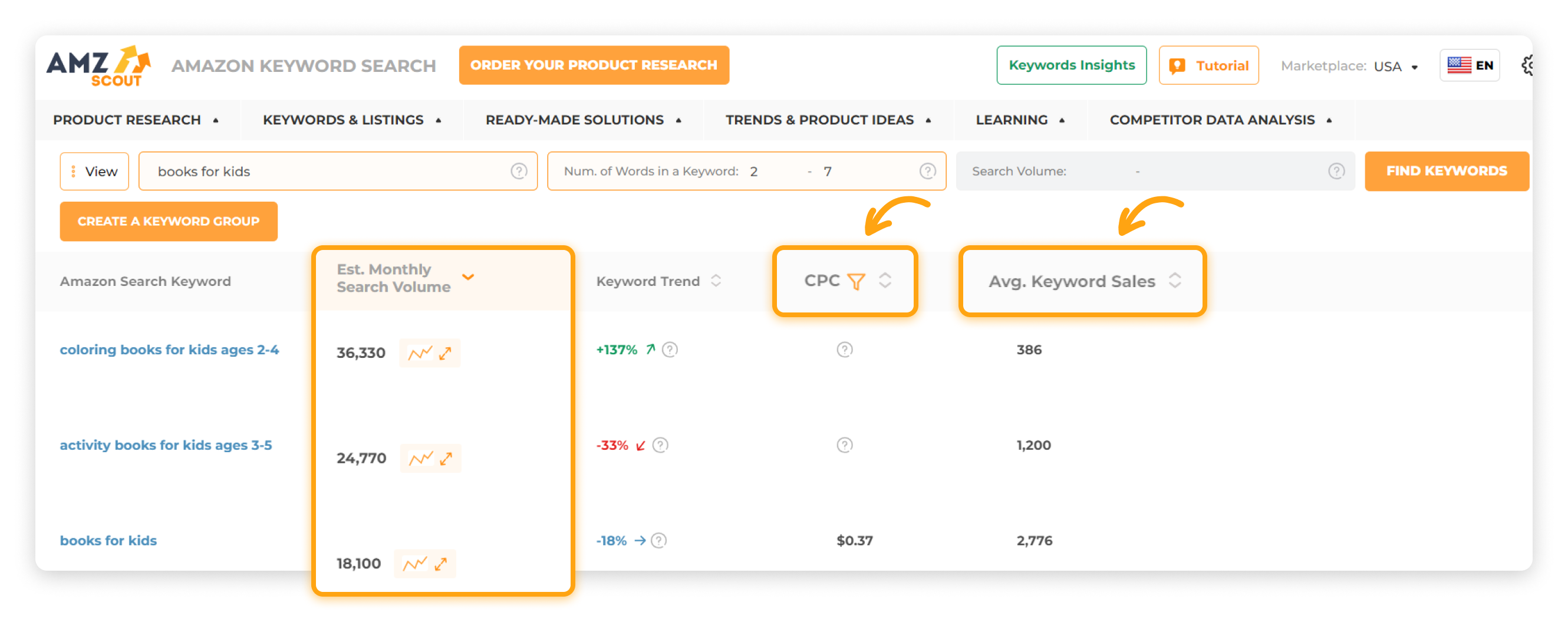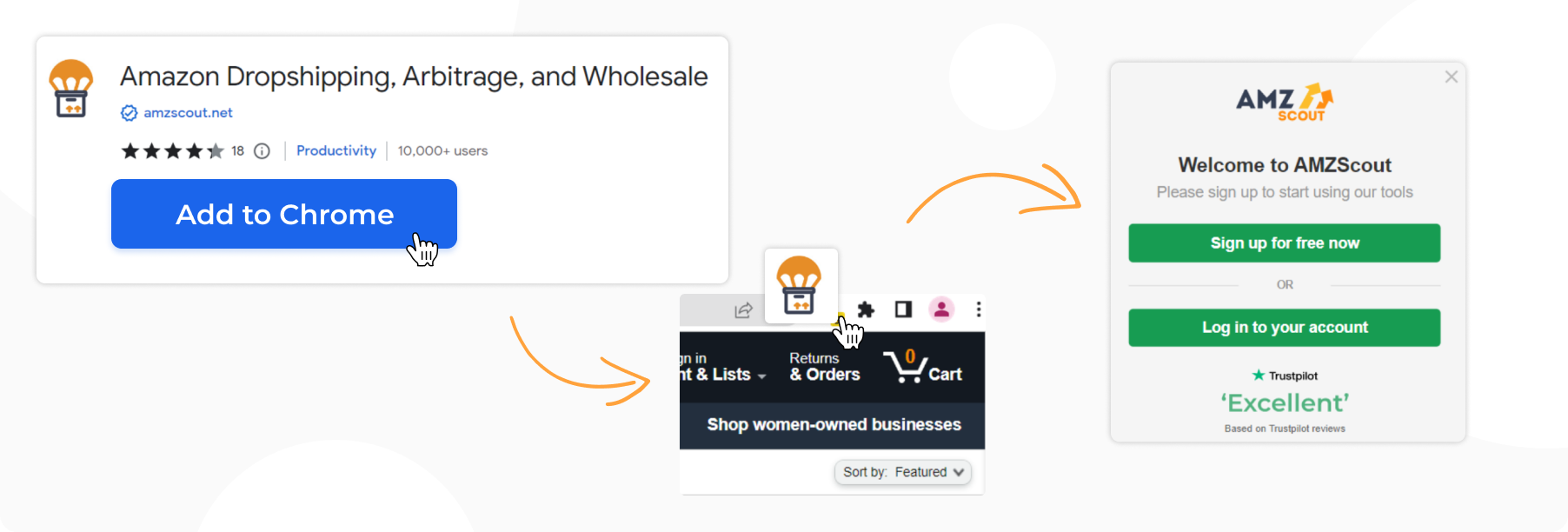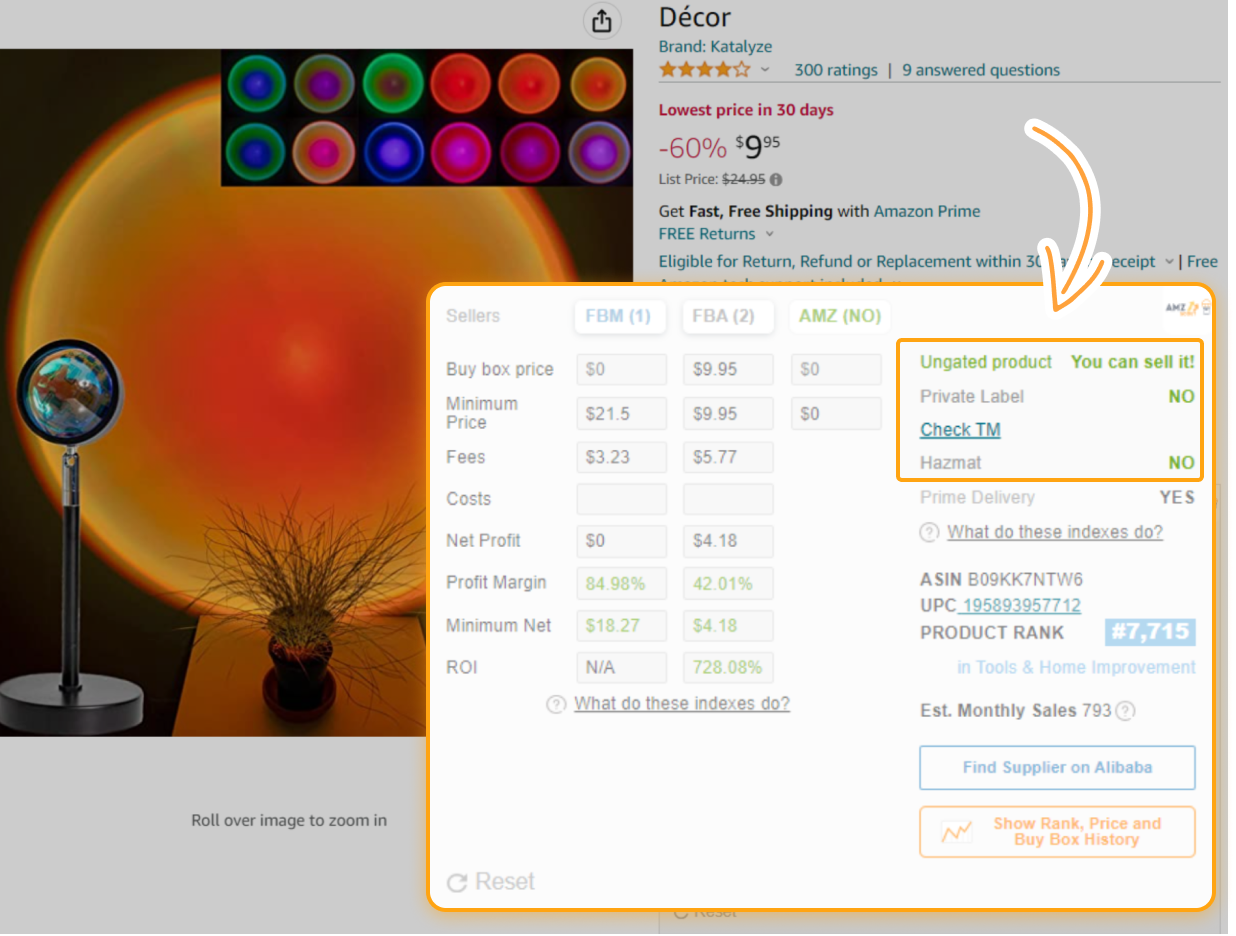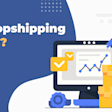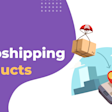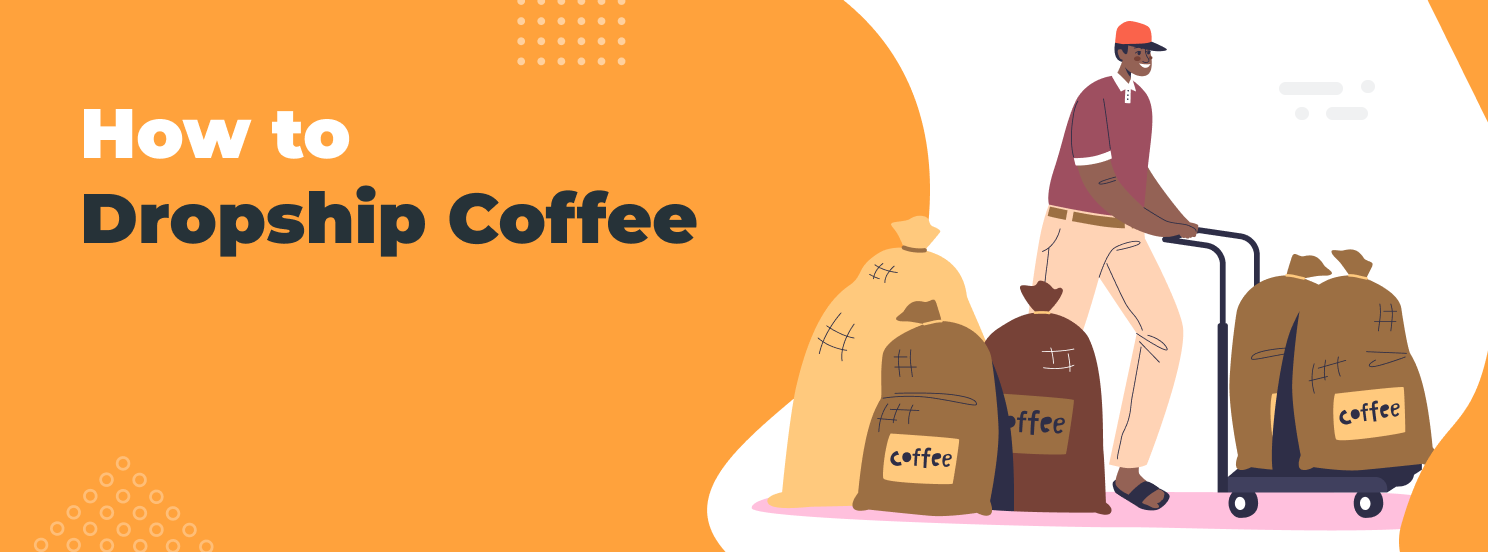
Starting a Coffee Dropshipping Business in 2025
Coffee isn’t just a drink — for millions, it’s a daily ritual. On average, people in the U.S. have three cups every single day! That kind of obsession makes coffee a smart and exciting product to dropship. But is dropshipping coffee profitable? Absolutely — when done right, it offers high margins, strong repeat purchase potential, and endless branding opportunities.
In this article, we’ll walk you through how to start a coffee dropshipping business and share tips to turn your idea into a profitable venture.
Table of contents
Dropshipping Coffee: A Step-by-Step Guide
The initial steps to starting a dropshipping business can vary depending on your personal goals and preferences. Here’s a universal step-by-step guide to launching a lucrative venture with coffee dropshipping:
Step 1: Choose Where to Sell Your Coffee Products
First, you need to decide where you want to sell your products, as your supplier choice will depend largely on the platform integration they offer. Here are four common options:
Amazon: Selling on Amazon doesn’t require any special technical skills, charging only $0.99/sale. With a massive built-in audience, it’s easy to reach potential customers. However, you need to find a vendor who understands and adheres to Amazon's packaging rules, or you’ll risk having your account blocked.
Your own website: This option is ideal for brand owners who want full control over their branding and customer relationships. Platforms like Shopify and WooCommerce allow store customization, but can also be costly. Shopify theme customization starts at $300, while WooCommerce requires a developer, hosting, and ads to drive traffic.
eBay or Etsy: These platforms are ideal for niche or novelty items like handmade mugs or specialty coffee blends. However, customers on these sites often look for deals and may not be willing to pay premium prices.
Social media commerce: Selling via Instagram Shop or Facebook Marketplace offers a community-driven, visual approach. This method is effective for showcasing products, but requires creativity and often comes with costs related to the effort needed to build an audience.
You can sell across multiple platforms. Many coffee providers offer integrations across different channels, allowing you to expand your reach with a single subscription.
Step 2: How to Identify Profitable Coffee Products
Once you find a product idea, it’s time to evaluate whether it’s actually worth selling. Here are the key metrics to assess:
Profitability: Make sure the product leaves enough margin to cover costs like shipping, transaction fees, and ads, while still allowing room to scale.
Product weight and size: Lightweight, compact items are ideal for dropshipping as they reduce shipping costs and risk of damage.
Customer satisfaction: Look for products with a strong track record — readings, over 4 stars or consistently positive reviews help reduce returns and complaints.
...And more.
However, in order to accurately calculate potential earnings, you’ll need to access data that platforms like Shopify or Etsy don’t share publicly, such as monthly sales volume. That’s where product research tools come in.
Step 3: Discover a Profitable Coffee Product Idea
Before choosing a supplier, you need to be sure there’s real demand for the coffee product you plan to sell. Here are a few ideas for how to find a product with high profit potential:
Use keyword tools: Google Trends helps you track global interest over time. For platform-specific data, try tools that are tailored to each site — for Amazon, the AMZScout Keyword Search tool is a top choice for checking monthly search volumes and product keywords.
Check customer reviews: Read reviews on existing products to understand what buyers like or complain about — this reveals opportunities to offer something better.
Browse bestseller lists: Platforms like Amazon and Walmart show their top-selling items, giving you a quick view of what’s already in demand.
Explore social media: Hashtags, viral videos, and engagement numbers (views, likes, shares) for products in your niche highlight trends.
These methods help you identify what people are excited to buy — but interest alone isn’t enough. You also need products with healthy margins and manageable competition. In the next section, we’ll cover how to evaluate those metrics.
Assessing a Product Potential for Dropshipping with AMZScout
Fortunately, Amazon sellers can use the AMZScout Dropshipping, Arbitrage, and Wholesale Extension to evaluate a product’s potential — and the insights you gain often apply across other platforms too, since ecommerce trends tend to follow similar patterns.
How to use the tool:
1. Install the AMZScout Dropshipping, Arbitrage, and Wholesale Extension.
2. Search for products. Use Amazon’s search bar to explore coffee-related items (such as mushroom coffee or reusable filters). Open a product page to see detailed data from the extension. 3. Check for any selling restrictions. In the sidebar window, review key restrictions including:
Gated category: Coffee is generally ungated, but some variations may have limitations.
Private label: Check if the product is brand-exclusive or open to resale.
Brand permission: Use the ™ feature to see if the product is trademarked and brand approval is required.
4. Analyze Product History. Use the Rank, Price, and Buy Box History tool to view product rank, pricing, and seller competition. This helps you define an appropriate selling price.
5. Evaluate the competition. Look at the following metrics:
Number of sellers: More than 10 active sellers might signal high competition.
Amazon as a seller: If Amazon itself sells the product, it’s often best to avoid competing directly.
6. Calculate profit potential. Enter the product cost, shipping, and fees into the FBM profit calculator. Aim for a profit margin of at least 20% to leave room for marketing and growth.
Note: The extension also estimates monthly sales, giving you a reliable view of product demand.
Using this tool makes it much easier to identify profitable coffee products for dropshipping. And since product trends often apply across platforms like Etsy, eBay, and Shopify, the data you collect here can also inform your broader strategy.
Step 4: Choose a Reliable Coffee Dropshipping Supplier
Once you find your ideal product, the next important step is choosing a supplier you can trust. Whether you're sourcing beans or branded merchandise, your choice of partner can make or break your coffee dropshipping business.
Here are some popular coffee dropshipping companies to consider:
Dripshipper: Specializing in private-label coffee, Dripshipper allows you to add your own logo and custom packaging, making it a great option for those looking to build a coffee brand.
Temecula Coffee Roasters: Known for hand-crafted roasting and a variety of blends, this U.S.-based supplier offers flexible white-label options.
Blessed Bean Coffee: Offers custom branding and a wide selection of coffee types — including organic and fair-trade options.
Old Chicago Coffee Co: Known for eco-friendly practices and charitable work, this coffee bean supplier offers automated dropshipping. However, keep in mind that white-label orders require manual coordination.
Seattle Gourmet Coffee: A coffee wholesaler that sells non-customized products and occasionally works with dropshippers, depending on availability.
When choosing between these companies, consider factors like shipping speed, customization options, integration with your platform, pricing tiers, and reviews. Don’t forget to order samples to test taste, freshness, and packaging firsthand.
Now that you know the steps to starting a coffee business, let’s explore some tips from top sellers that can help small businesses boost their performance.
Three Tips to Stay Ahead of the Curve with Coffee Dropshipping
In a competitive niche like coffee, success depends on more than just offering a good product — you need to stand out in a way that still aligns with customer interests. Here are three proven ways to differentiate your store while staying relevant:
Tip 1: Go Green with Eco-Conscious Coffee Products.
Sustainability sells, especially when it comes to eco-conscious consumers. Offer compostable packaging, reusable accessories like metal filters, and source from ethical or fair-trade companies. Highlight these values clearly in your product descriptions and branding.
Tip 2: Embrace the No-Caffeine Movement
More shoppers are turning to caffeine-free alternatives for health and sleep benefits. Offer bold decaf, chicory or cacao-based blends, and calming adaptogenic drinks. These options also appeal to evening coffee drinkers and wellness-focused customers.
Tip 3: Offer Guilt-Free, Low-Calorie Options
Health-conscious buyers want coffee that suits their diet without sacrificing taste. Stock sugar-free mixes, keto-friendly blends, and non-dairy creamers like oat or coconut milk. Functional, low-calorie products can turn one-time buyers into repeat customers.
Over time, you'll learn what resonates most with your customers. Keep testing, stay consistent with your message, and always look for new ways to deliver value.
Five of the Best Coffee Products for Dropshipping in 2025
Now that you know how to identify high-profit products, let’s explore some booming coffee-related product ideas. Here are the top five coffee products to dropship in 2025:
1. Mushroom Coffee Mixes
Functional beverages are trending due to their wellness benefits, offering a natural boost without the jitters. Popular options include lion’s mane coffee, reishi blends, and instant adaptogenic coffee, catering to health-conscious consumers.
2. Organic Coffee Beans
Sustainability is key for today’s coffee lovers, with many seeking traceable, ethically sourced products. Dropshipping single-origin beans, fair-trade certified coffee, or those with compostable packaging appeals to eco-conscious buyers.
3. Private Label Coffee Blends
Creating custom coffee blends allows you to build brand loyalty and add perceived value. Offer unique options such as flavored blends, dark roasts, or seasonal varieties to set your store apart from your competitors.
4. Funny and Aesthetic Coffee Mugs
Print-on-demand coffee mugs are a hit due to their personal appeal and easy design process. Popular trends include sarcastic quotes, minimalist art, and zodiac-themed designs, making them perfect for niche markets.
5. Travel-Friendly Coffee Gear
Coffee solutions for on-the-go customers are essential, especially for commuters. Think collapsible mugs, portable espresso machines, and instant brew kits.
Keep in mind that demand for products can shift, so regular market research is key to staying ahead of trends. This way, you can meet customer needs more effectively and stay competitive.
FAQs
Is coffee dropshipping profitable?
Yes, coffee dropshipping can be profitable thanks to strong customer demand and high margins, especially for premium products. However, your success depends largely on your selling strategy, including your choice of platform, supplier, and product selection. Consider using tools like AMZScout to find high-potential, low-competition products that increase your chances of success.
How can I start a dropshipping coffee business?
To start a coffee dropshipping business, you need to choose a platform to sell on (like Amazon or Shopify), find a reliable supplier, and import coffee products into your e-store. It’s also smart to run ads to drive targeted traffic and boost initial sales. For a detailed walkthrough, check out this guide on how to dropship coffee effectively.
Is coffee a good product to sell online?
Coffee is one of the best-selling products online because it’s a consumable item, which drives repeat purchases year-round. And since it’s lightweight, this also helps to reduce shipping costs, making it ideal for ecommerce. To succeed, it’s important to focus on high-quality products that meet customer expectations and stand out in a competitive market.
Can I rebrand coffee and sell it?
Yes, you can create your own brand of coffee through private label or white-label suppliers. This involves registering a trademark, designing your own logo and packaging, and crafting a unique brand story. While building a brand takes time and effort, it can also lead to higher margins and long-term profitability.
Conclusion
While coffee dropshipping success depends on many factors, from finding a reliable supplier to building a loyal customer base, product selection is the foundation of success. Consider using the AMZScout toolkit to quickly identify the best coffee products to dropship and make data-driven decisions. This way, you can confidently grow your venture into a profitable business while saving time and working smarter.
